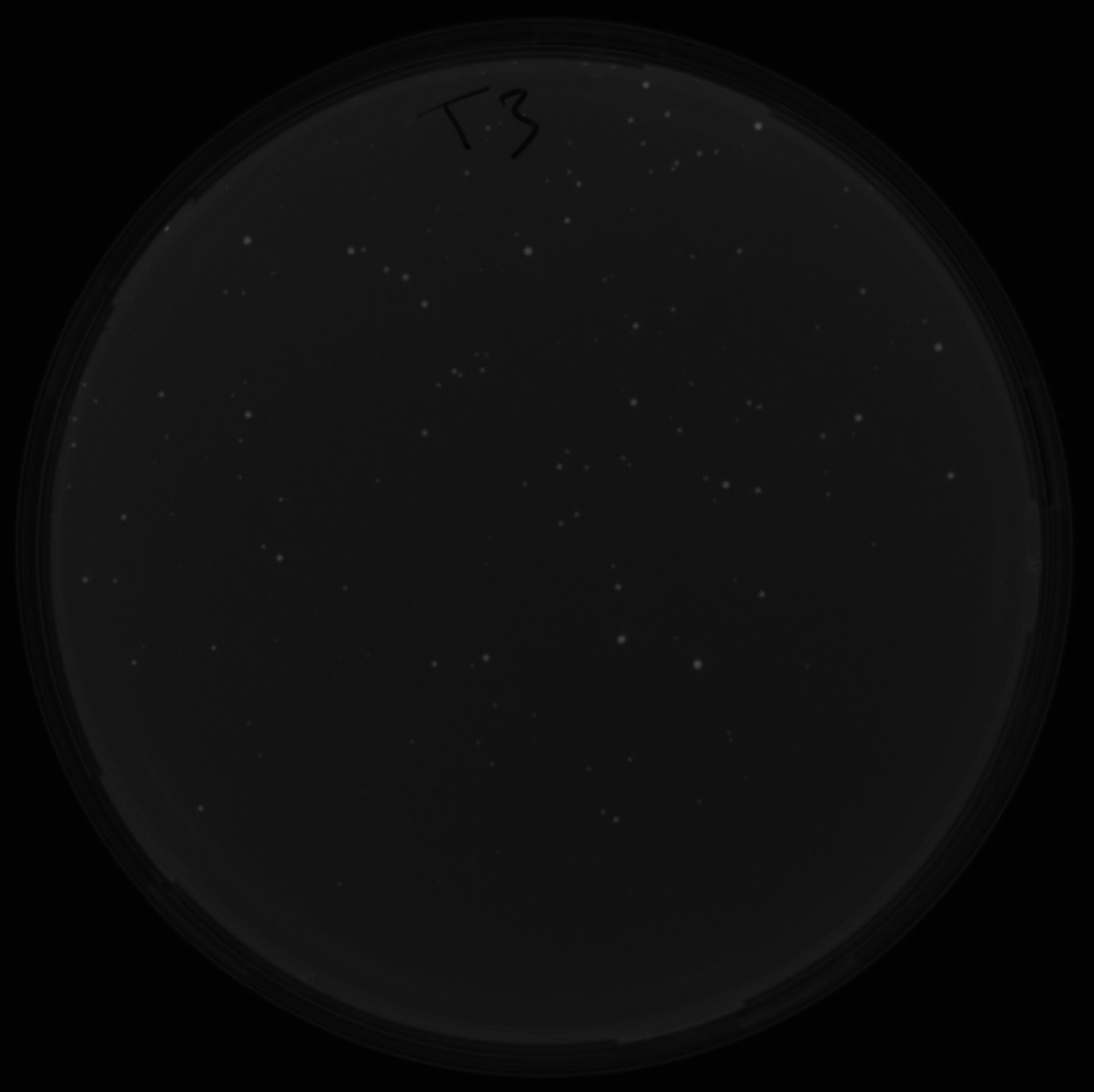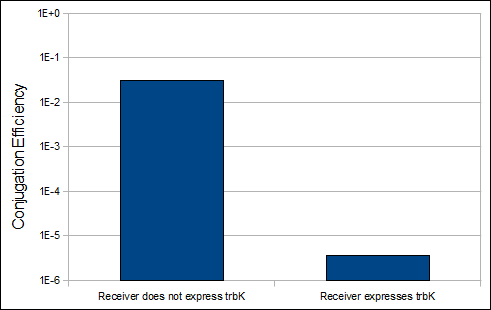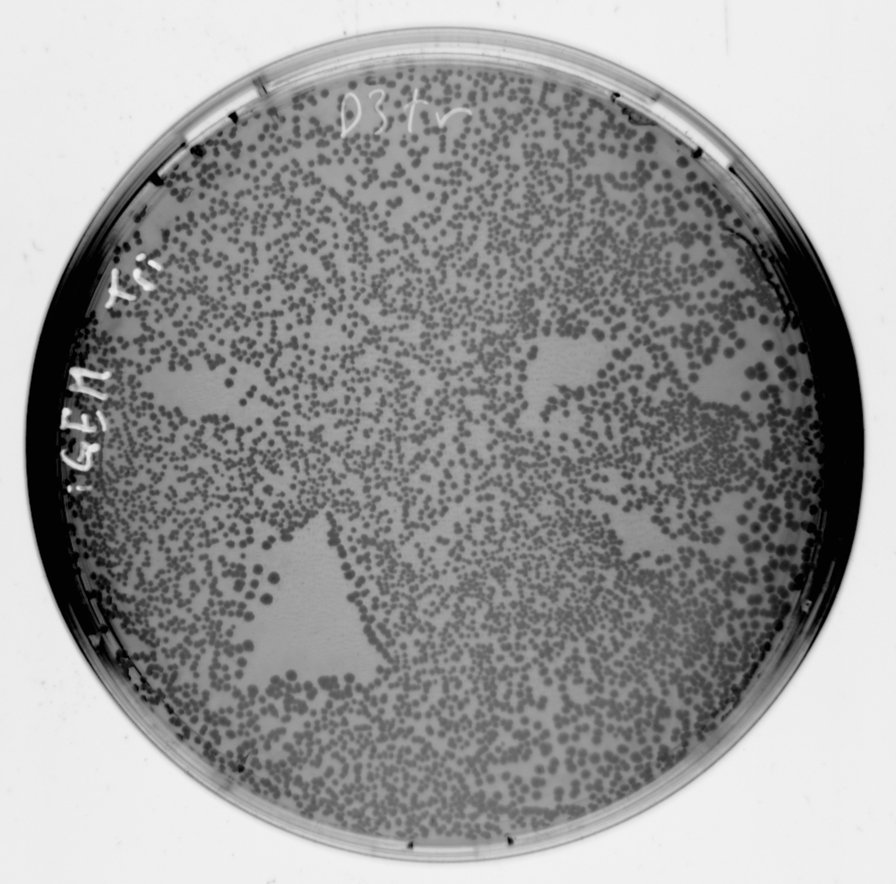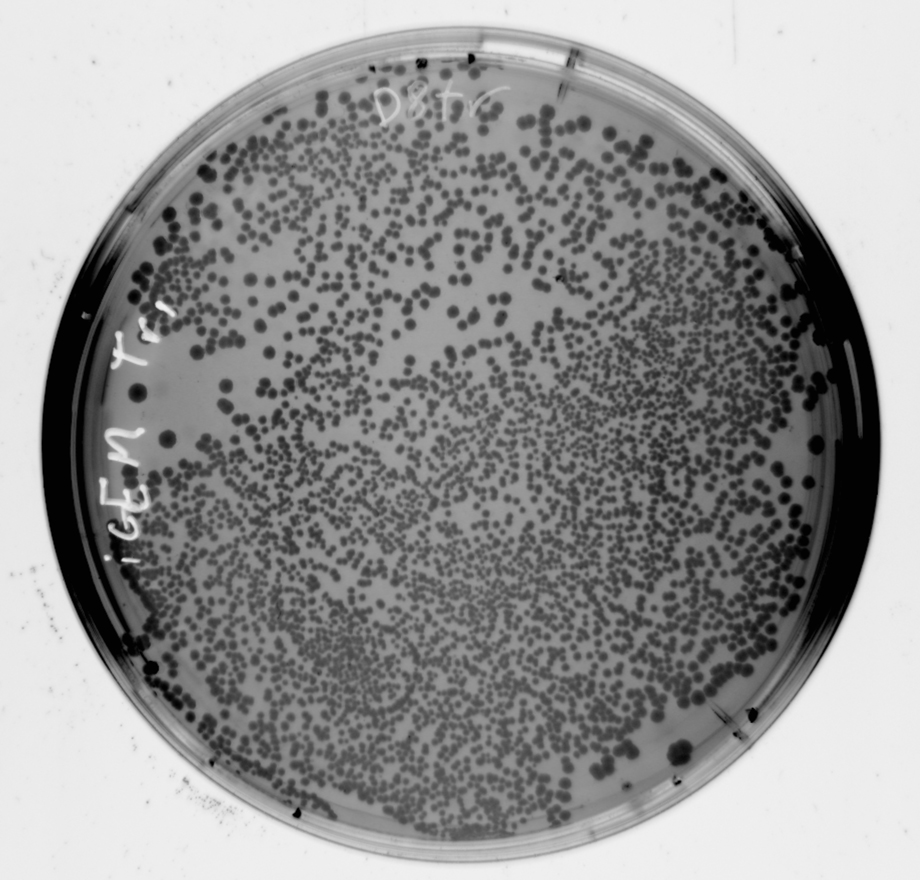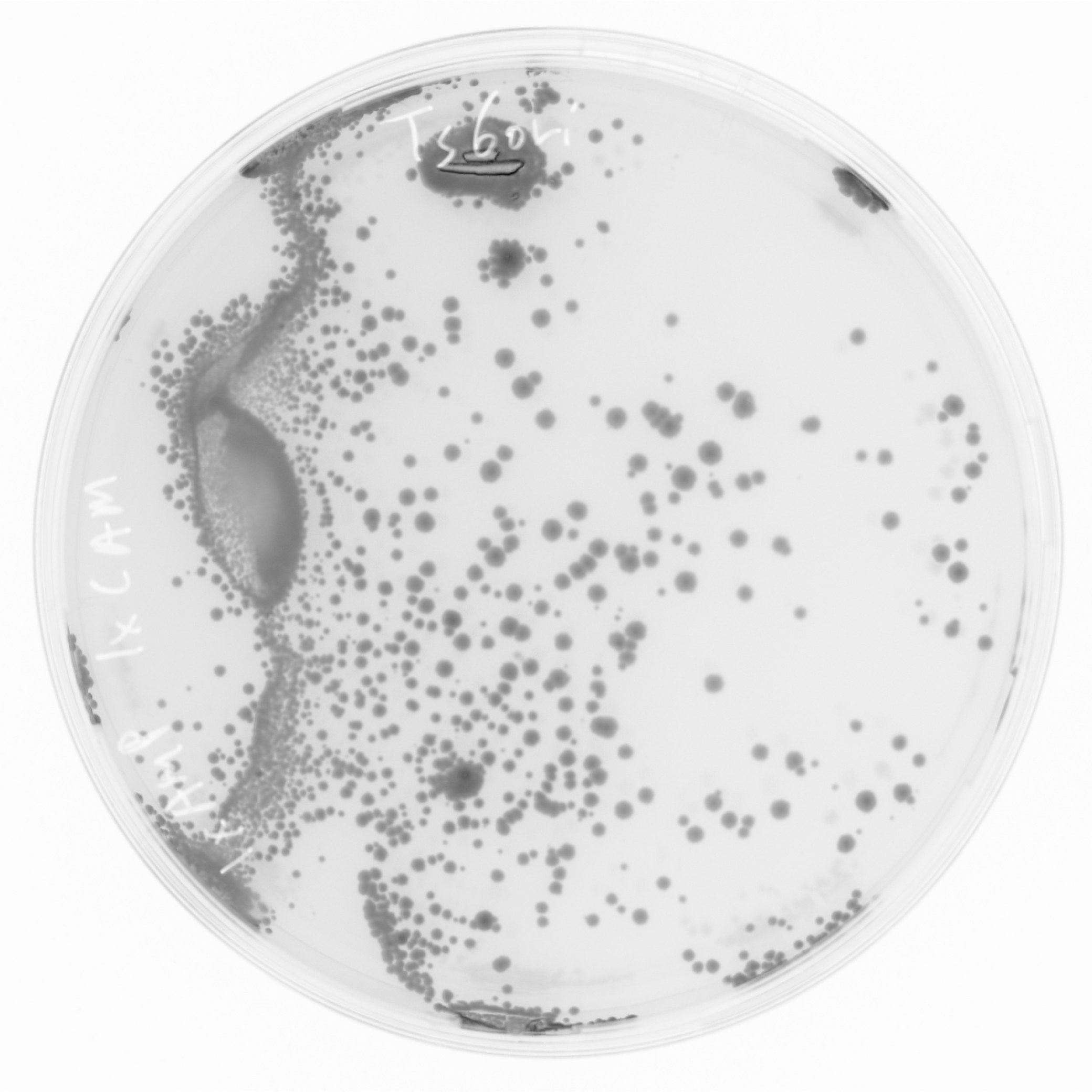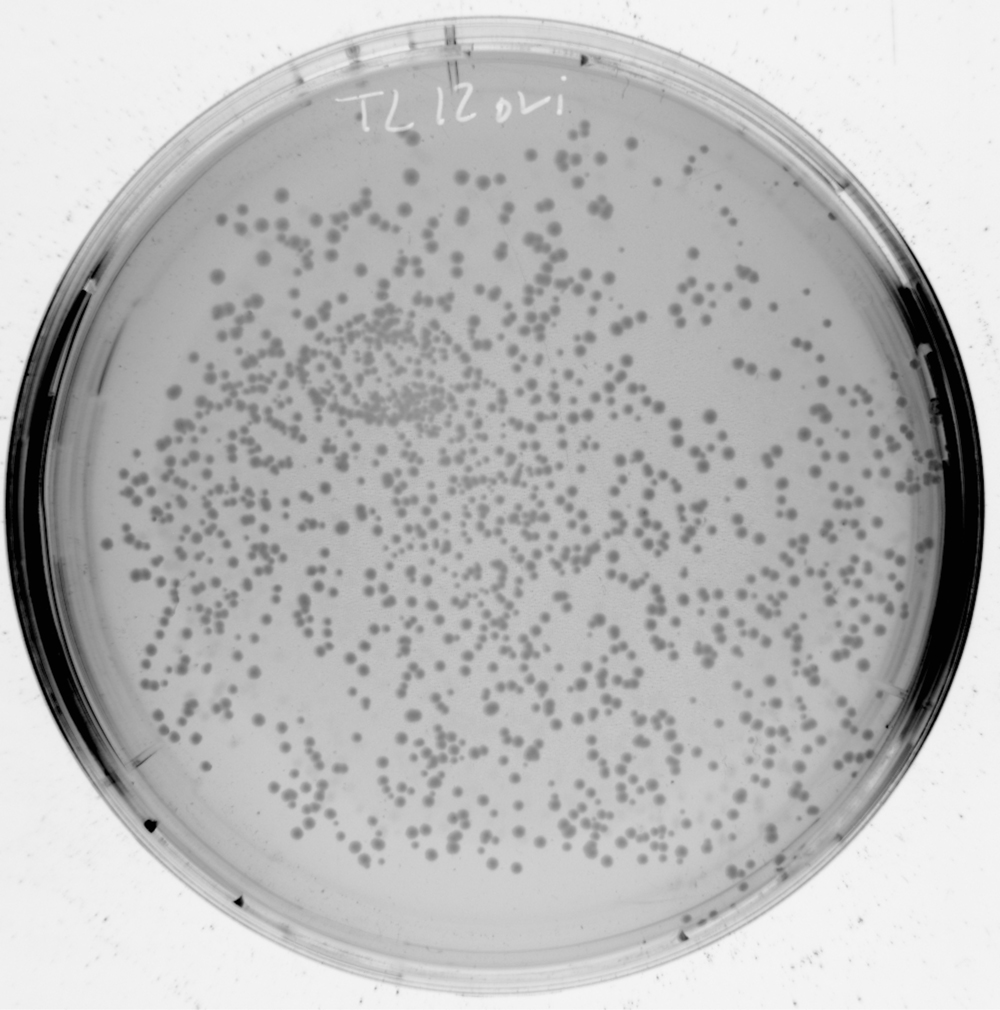Team:TUDelft/Conjugation Results
Conjugation Results
Verification and Characterization of Wild R751
A conjugation test was done using our conjugation protocol to determine wild R751 conjugation efficiency.
Donors: [http://www.cbs.knaw.nl/databases/nccb/search_bac_plas.aspx NCCBNr# 2350] cells with R751 (TRI)
Receivers: DH5 α cells with [http://partsregistry.org/Part:BBa_I13522 I13522] (AMP)
Transconjugants: DH5 α cells with R751 and [http://partsregistry.org/Part:BBa_I13522 I13522] (TRI+AMP)
The following table shows the calculated conjugation efficiencies (raw data here):
| Data Set | Conjugation Efficiency |
| 1 | 0.028 |
| 2 | 0.028 |
| 3 | 0.025 |
|
|
Verification and Characterization of trbK entry exclusion protein
A conjugation test was done using our conjugation protocol to verify that expression of [http://partsregistry.org/wiki/index.php?title=Part:BBa_K175001 trbK] blocked conjugation.
Donors: [http://www.cbs.knaw.nl/databases/nccb/search_bac_plas.aspx NCCBNr# 2350] cells with R751 (TRI)
Receivers: DH5 α cells expressing [http://partsregistry.org/wiki/index.php?title=Part:BBa_K175001 trbK] (CAM)
Transconjugants: DH5 α cells with R751 and expressing [http://partsregistry.org/wiki/index.php?title=Part:BBa_K175001 trbK] (TRI+CAM)
Receivers Control: DH5 α cells with [http://partsregistry.org/Part:BBa_I13522 I13522] (AMP)
Transconjugants Control: DH5 α cells with R751 and [http://partsregistry.org/Part:BBa_I13522 I13522] (TRI+AMP)
The positive control test used the same donors but different receivers, as detailed above.
The following table shows the calculated conjugation efficiencies (raw data here):
| Set # | Conjugation Efficinecy |
| trbK 1 | 4.49E-6 |
| trbK 2 | 2.89E-6 |
| control | 0.031 |
We can see from this graph that expression of trbK does indeed reduce the conjugation efficiency by four orders of magnitude. With this we have a method to prevent back propagation of the signal and we now have receiver side control over communication.
|
|
Verification and Characterization of Conjugation Testing Plasmid 1
A conjugation test was done using our conjugation protocol to verify that [http://partsregistry.org/wiki/index.php?title=Part:BBa_K175005 Conjugation Testing Plasmid 1] was transmitted during conjugation.
Donors: [http://www.cbs.knaw.nl/databases/nccb/search_bac_plas.aspx NCCBNr# 2350] cells with R751 and [http://partsregistry.org/wiki/index.php?title=Part:BBa_K175005 Conjugation Testing Plasmid 1] (TRI+CAM)
Receivers: DH5 α cells with [http://partsregistry.org/Part:BBa_J23100 J23100] (AMP)
Transconjugants A: DH5 α cells with R751 and [http://partsregistry.org/Part:BBa_J23100 J23100] (TRI+AMP)
Transconjugants B: DH5 α cells with [http://partsregistry.org/wiki/index.php?title=Part:BBa_K175005 Conjugation Testing Plasmid 1] and [http://partsregistry.org/Part:BBa_J23100 J23100] (CAM+AMP)
The following table shows the calculated conjugation efficiencies (raw data here):
| Set # | Conjugation Efficiency for Conjugation Testing Plasmid 1 | Conjugation Efficiency for wild R751 |
| 1 | 0.00177 | 0.0141 |
| 2 | 0.00224 | 0.0476 |
| 3 | n/a | 0.0356 |
The reason for the lower efficiency of [http://partsregistry.org/wiki/index.php?title=Part:BBa_K175005 Conjugation Testing Plasmid 1] compared to R751 is the presence of the entry exclusion protein trbK. If a receiver cell gets Conjugation Testing Plasmid 1, it can still receive R751 afterward. But if a receiver cell gets R751, it will not accept Conjugation Testing Plasmid 1 afterward because trbK expression will block incoming transfers.
This test will be redone with R751 ΔoriTR cells once they are available.
|
|
R751 Gene Knockouts
The first two knockout attempts [1] [2] failed for both oriTR and trbK knockouts. A third attempt is currently in progress using the [http://www.genebridges.com/gb/details.php?prod_id=K004&main_group=red Quick & Easy Conditional Knock Out Kit - FRT] from Gene Bridges.
 "
"

